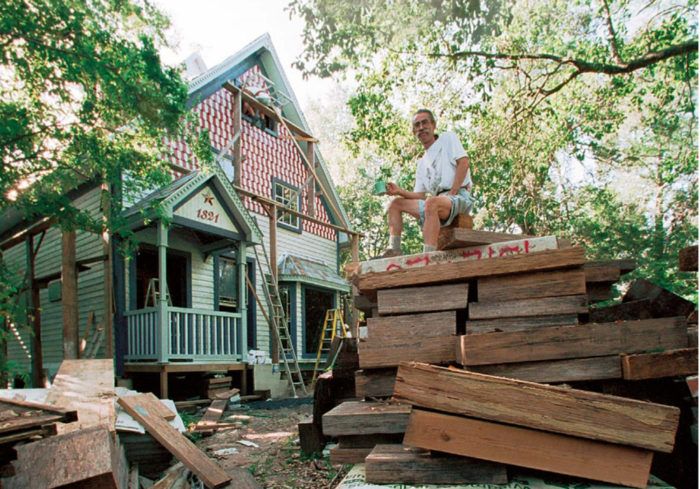Making the American Dream Affordable
A Texas builder tackles affordable housing with recycled materials, job-site waste and minimum-wage crews.

Synopsis: A builder explains how he uses salvaged, surplus, and recycled lumber and other building materials, innovative designs and construction techniques, and unskilled labor to build unique, affordable homes for low-income families in Texas.
The fever to own a home is as primal an instinct as humans can have. It is the American dream. So how is it that 10% of the average landfill waste stream in America is usable building material when we have millions of families that do not own homes? I build low-income housing for about $30 per sq. ft. using free, salvaged and recycled materials. I call what I do aftermarket building. My minimum wage workers first come to me unskilled but will eventually compete for higher-paying jobs because of the skills they develop. While I must follow all the rules building codes and the laws of physics the city inspectors have all been cheerleaders. I probably could increase the profit if I were to take less time working on design details, but I like the work and have a waiting list of buyers.
Much building waste can be used
Few other industries in the United States have a sadder record of exploiting their refuse than does the building industry. In practically all other sectors of the economy, aftermarket industries thrive. In construction, however, leftovers, cutoffs, mismatches and mistakes are routinely taken to landfills or simply burned. There probably isn’t a contractor in America who doesn’t grieve about the usable materials that are discarded. In the meantime, low-income families must either rent or buy inflated American-dream look-a-likes with vinyl-covered foam door casings, cheap carpets and thin walls.
The reasons for the waste are evident enough. First, labor is disproportionately more expensive than materials. If it’s faster or easier to pick up a new 2×4 than to pull nails out of an old one, we grab the new one and throw away the old one. Second, most building activity follows standardized strategies, so if a particular thing is not standard for instance if that old 2×4 is a full 2 in. by 4 in. instead of 1-1 ⁄2 in. by 3-1 ⁄2 in. it goes to the landfill. Third, specialization and “cost-plus” business concepts typically include a 10% slippage to allow for culls and mistakes. Anything left over, while ultimately charged to the home buyer, eventually goes to the trash. After all, the home buyer doesn’t know what to do with two lengths of #4 rebar.
Besides these market-driven factors, there is a deep predilection in our DNA that demands unity; all doors must match, and all ceramic in the bathroom must be the same color. Odd things go to the landfill.
After I asked a few local companies about materials and a few people had stopped by the work site to ask what I was doing, donated materials started flooding in. Now, I get a call at least once a week from someone wanting to give me something, from vanity sinks, dishwashers and bidets to pallets of granite, stoves and windows. I have developed a fairly large network for material acquisition. I buy very little at full price.
For more photos and details on building affordable homes with salvaged materials, click the View PDF button below.
Fine Homebuilding Recommended Products
Fine Homebuilding receives a commission for items purchased through links on this site, including Amazon Associates and other affiliate advertising programs.

All New Kitchen Ideas that Work

Anchor Bolt Marker

Musings of an Energy Nerd: Toward an Energy-Efficient Home

























